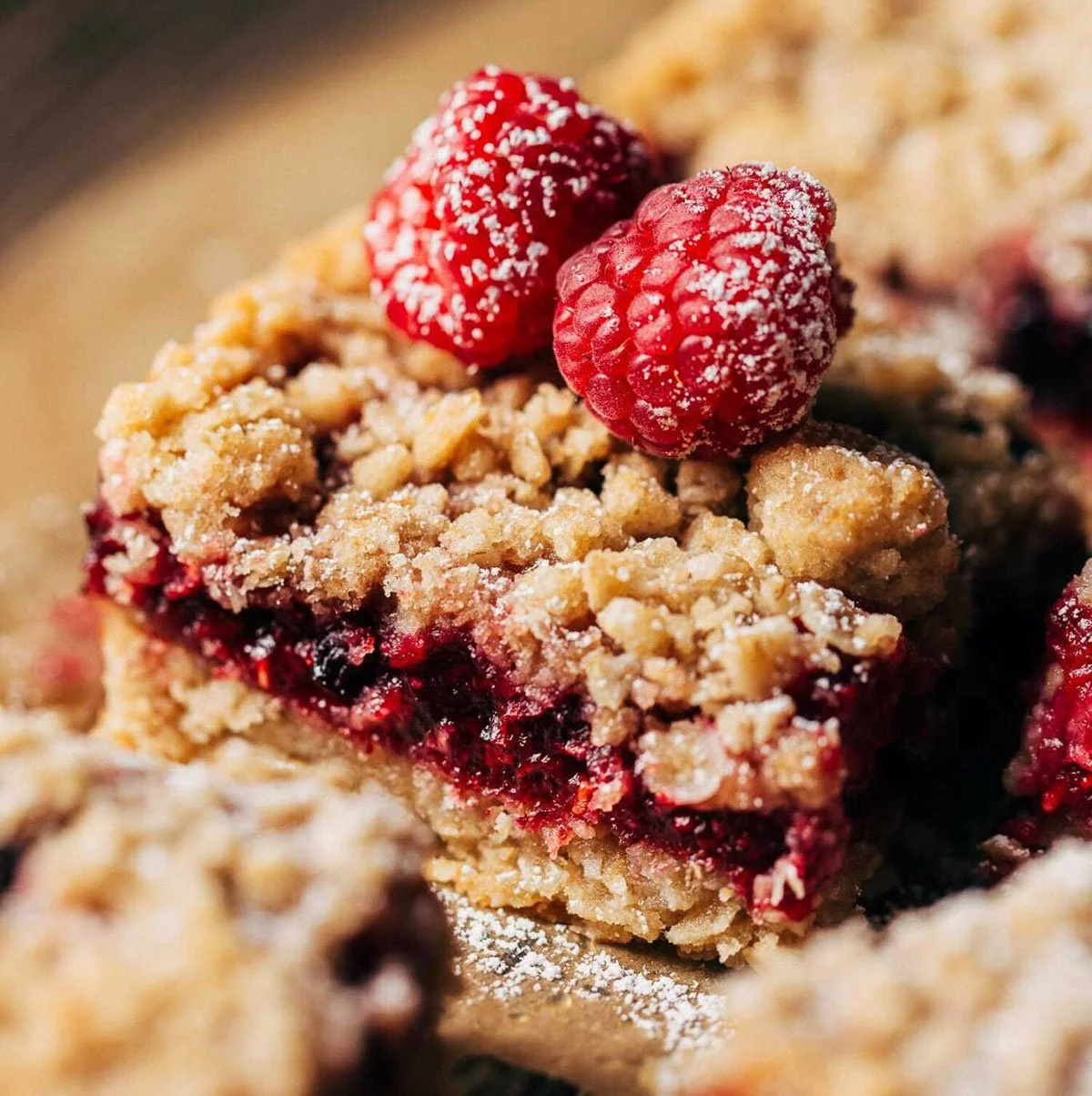Styled and Savored #020
Your weekly curated guide to great finds that make your home life easier, fuller, richer, and happier.
From the kitchen to the backyard and even the office, this week’s Styled & Savored roundup has inspiration everywhere you look. Foodies can indulge in brown sugar berry crumble bars, savor comforting Swiss steak, or sip a colorful prickly pear margarita. There’s also a great kitchen hack to teach you options for efficiently cutting fresh corn right off the cob.
On the home and lifestyle side, we’ve got smart advice for building an outdoor kitchen, practical tips for tree pruning, and cozy ideas to make your workspace feel more inviting. And if you’ve ever struggled to move from planning to action, we also give you the blueprint for finally making real progress.
How to Execute Your Plans
Making plans is easy. Sticking to them is the hard part. This Art of Manliness article dives into why so many of our best-laid intentions fall apart and offers a practical framework for seeing them through. Rather than focusing on lofty motivational quotes, it grounds the discussion in psychology and habit-building, emphasizing that execution is less about inspiration and more about structure.
© istockphoto.com
The piece begins by acknowledging a universal truth: We often mistake planning for progress. Writing down steps or creating a timeline feels productive, but it doesn’t automatically translate to action. The real challenge comes when you hit obstacles, distractions, or plain old inertia. To bridge that gap, try breaking big goals into smaller, manageable tasks that can be scheduled and tracked – turning intentions into clear commitments.
One of the strongest takeaways is the importance of rituals and routines. Instead of relying on willpower alone, you set up your environment to make the next step almost automatic. Think systems instead of goals. For example, laying out gym clothes the night before increases the chance of exercising in the morning. The same applies to work projects, creative pursuits, or personal growth – when you design friction out of the process, execution becomes much easier.
The article also underscores the need for accountability, whether through check-ins with a partner, public commitments, or self-imposed deadlines. Momentum, once built, is self-reinforcing, and the satisfaction of following through fuels further action. By reframing execution as a series of small, deliberate victories rather than one heroic effort, the message is clear: The difference between dreamers and doers isn’t the size of their goals, it’s the consistency of their habits.
Cozy Office Decor Tips
As remote and hybrid work become the norm, the home office has transformed from an afterthought into a focal point of daily life. Dream Green DIY leans into this shift with a guide on making your workspace not just functional but inviting – what the author calls adding “cozy vibes” to a 9-to-5 setting. This isn’t about expensive overhauls but rather small, thoughtful changes that make a desk or office feel like a place you want to spend time in.
© Dream Green DIY
Lighting is a recurring theme throughout the article. Harsh overhead fluorescents sap energy and mood, so the author recommends layering light sources: desk lamps for focus, warm bulbs for ambiance, and natural light whenever possible. Plants are another quick win, introducing both color and calm while improving air quality. Even one potted succulent can change the mood of a workspace.
Textiles also play a key role in coziness. A soft throw draped over a chair, a patterned rug underfoot, or even a set of fabric-covered storage boxes adds warmth and character. These touches bridge the gap between professional and personal, making the office feel less sterile. For those who work long hours at a desk, comfort translates directly into productivity.
The article closes by encouraging personalization – whether that’s framed artwork, family photos, or a curated pinboard of inspiration. The takeaway is simple but powerful: when your workspace reflects your personality and provides comfort, you’re more likely to thrive within it. These ideas aren’t limited to home offices; they can be applied to shared workspaces, studios, or even small corners carved out of living rooms. In short, cozy decor isn’t a luxury, it’s a strategy for making work feel more balanced and sustainable.
How to Prune a Tree
Pruning trees may seem intimidating, but done right, it’s one of the best ways to keep your landscape healthy, safe, and beautiful. Family Handyman’s guide breaks down the process into approachable steps, highlighting not only the how but also the when and why of pruning. The message is clear: proper pruning is both an art and a science, but it’s well within reach for the average homeowner.
© Family Handyman
The article stresses timing first. Most trees benefit from pruning during dormancy – late winter or early spring – when wounds heal faster and insects are less likely to spread disease. Emergency pruning, however, such as removing broken or hazardous branches, can be done any time of year. Understanding the seasonal rhythm helps avoid unnecessary stress on the tree.
Technique is equally important. The guide outlines the three-cut method for removing larger limbs, which prevents bark from tearing and ensures a clean cut that heals properly. Readers are reminded never to cut too close to the trunk (a mistake known as “flush cutting”), since leaving the branch collar intact helps the tree close the wound naturally. For smaller branches, sharp hand pruners are often all you need.
Beyond the technical, the article emphasizes purpose: pruning for shape, safety, and health. Thinning dense canopies allows sunlight and airflow to reach lower branches, reducing disease risk. Removing limbs that grow inward or cross prevents long-term structural problems. And, of course, pruning away dead or storm-damaged wood keeps the tree from becoming a hazard. By presenting pruning as preventive care rather than cosmetic fussing, the article empowers readers to see it as a skill that protects both their trees and their property.
Outdoor kitchen planning
For many homeowners, an outdoor kitchen is the ultimate backyard upgrade. But before rushing to install a grill, fridge, and bar top, Barbecue Bible advises stepping back to think strategically. Their four key tips balance aspiration with practicality, helping you design a space that’s both functional and enduring.
© Barbecue Bible
The first consideration is layout. Just like an indoor kitchen, the outdoor version works best when organized around zones – prep, cooking, serving, and cleaning. Positioning these areas with efficiency in mind avoids bottlenecks and makes entertaining seamless. Proximity to the house is also worth weighing; running utilities like water, gas, and electricity is far easier (and cheaper) if the kitchen isn’t too far afield.
Materials come next, and here, durability is king. Outdoor kitchens face sun, rain, and temperature extremes, so surfaces need to resist rust, rot, and fading. Stainless steel, stone, and concrete are recommended, while wood requires careful sealing. The article makes it clear that cutting corners on materials often leads to regret later.
Budget and maintenance round out the advice. Even modest outdoor kitchens can add up quickly, so it’s smart to prioritize essentials – like a quality grill – before splurging on extras like a pizza oven. Long-term upkeep, from cleaning grease traps to protecting countertops, is another cost that should be factored in early. The article’s underlying theme is balance: dream big, but plan wisely. A well-thought-out outdoor kitchen isn’t just a luxury, it’s an investment in years of enjoyable cooking and entertaining.
Kitchen hack: Corn-cutting techniques
If you’ve ever tried cutting corn off the cob and ended up with kernels flying everywhere, you’re not alone. It’s one of those kitchen tasks that sounds simple until you’re in the middle of it, slipping on a countertop sprinkled with corn confetti. Serious Eats comes to the rescue with two methods that bring both order and efficiency to the process. Each approach is designed to minimize mess while making your life in the kitchen a whole lot easier.
© Serious Eats
The first technique is called the inverted bowl method, and it’s brilliant in its simplicity. By flipping a small bowl upside down inside a larger one, you create a steady perch for the cob. Holding the corn upright, you run your knife down the sides, and instead of kernels scattering across the counter, they fall neatly into the catch bowl. Even better, this method captures the corn “milk” – that sweet, starchy liquid that seeps out during cutting – which is a valuable ingredient for soups, chowders, or creamed corn. It’s fast, efficient, and a huge improvement over the old “hold it upright on a cutting board and pray” approach.
The second technique, called the cutting board method, is less about speed and more about presentation. With this approach, you lay the cob flat on a cutting board and slice off kernels in long strips, sometimes even leaving them in wide planks. This results in a more uniform and attractive look – perfect for summer salads, side dishes, or anywhere presentation matters. It may take a bit more patience, but the payoff is in the aesthetics. Plus, it’s safer for those who don’t feel comfortable balancing a slippery cob upright.
What’s especially nice about this article is the way it encourages you to think about your goal before choosing your method. Are you in a rush to get corn into a pot of chowder? Go inverted bowl. Want a show-stopping salad centerpiece? Lay it flat and go for planks. By treating the technique as adaptable rather than one-size-fits-all, the piece reminds us that good cooking isn’t just about the ingredients, it’s about respecting the process. In the end, cutting corn doesn’t have to feel like a battle. With the right method, it can be quick, clean, and, dare we say, satisfying.
Comfort food for dinner: Swiss steak
Hearty, comforting, and deeply flavorful, Swiss steak is one of those classic dishes that feels like it came straight out of a grandmother’s kitchen. The Cookie Rookie’s recipe takes this old-fashioned favorite and makes it approachable for modern cooks, whether you’re feeding a family or just craving a cozy meal on a cold night.
© The Cookie Rookie
The dish begins with inexpensive cuts of beef, like round steak, which become meltingly tender through long, slow cooking. The steak is dredged lightly in flour, seasoned with salt and pepper, then seared to develop a crust and lock in flavor. From there, the magic happens in the sauce: a base of onions, garlic, diced tomatoes, and beef broth creates a rich, tangy gravy that infuses the meat as it simmers.
Cooking can be done in the oven or a slow cooker, with the latter offering the convenience of set-it-and-forget-it ease. After several hours, the beef transforms into fork-tender slices bathed in tomato-based sauce. It’s a meal that fills the house with comforting aromas, making the wait more than worth it.
The article suggests serving Swiss steak with mashed potatoes, rice, or noodles – something to soak up that savory gravy. Leftovers reheat beautifully, often tasting even better the next day. In a food world obsessed with fast trends, this recipe is a reminder of the enduring appeal of simple, well-cooked classics. It’s humble fare, but also deeply satisfying.
Brown sugar berry crumble bars
Few desserts strike the balance between comfort and freshness as well as crumble bars, and Butternut Bakery’s brown sugar berry version is a perfect example. Combining the warmth of brown sugar with the brightness of mixed berries, these bars are as suited for a summer picnic as they are for a cozy winter treat. The recipe keeps things straightforward, layering flavor and texture without overcomplicating the process.
© Butternut Bakery
The base starts with a mixture of flour, oats, brown sugar, baking powder, and salt, bound together with melted butter. This mixture doubles as both the crust and the crumble topping, creating a buttery, slightly spiced foundation that complements the fruit. The filling is simply fresh berries – blueberries, raspberries, and blackberries– tossed lightly with granulated sugar and cornstarch to thicken as they bake.
Assembly is simple: press most of the oat mixture into a pan to form the crust, spread the berry mixture evenly over the top, then sprinkle the remaining crumble mixture as a golden blanket. After baking, the result is a bar that’s crisp on the outside and gooey in the center, with the tartness of the berries balancing the sweetness of the brown sugar.
The beauty of this recipe is its adaptability. The author encourages using whatever berries are in season, or even frozen ones in a pinch. The bars cut cleanly once cooled, making them easy to transport for gatherings. They’re rustic enough for a casual snack yet special enough to serve at brunch or dessert tables. It’s a recipe that feels indulgent without being fussy.
Prickly pear margarita
Sometimes a cocktail is more than just a drink. It’s an experience. That’s the case with The Kitchn’s prickly pear margarita, which takes a familiar favorite and elevates it with stunning color and a subtle sweetness. Made with the juice of prickly pears – those vibrant magenta cactus fruits – the drink is as much a feast for the eyes as it is for the palate.
© The Kitchn
The recipe begins with making a simple prickly pear syrup. At this point you may be saying to yourself, “Where the bejeezus am I going to find prickly pears?! Is this guy nuts?!” Not to worry if you can’t find this seasonal fruit (the peak time for availability is late summer into fall), there are plenty of substitutes you can use. The first option would be to get yourself some prickly pear syrup, which is available from online retailers like Amazon. This has the added benefit of skipping the step of making the syrup yourself as the first step in the recipe. Additionally, you can use fruits like guava, kiwi, or watermelon if you can find fresh prickly pears.
Combine the syrup with classic margarita components: tequila, orange liqueur, and lime juice. The result is a cocktail that’s bright, tangy, and just sweet enough, with the prickly pear adding a unique, slightly floral note.
Presentation is part of the appeal. Served over ice in a salt-rimmed glass, the drink practically glows, making it perfect for dinner parties or festive gatherings. Garnishing with a lime wedge – or even a slice of prickly pear when available – adds an extra layer of polish.
What makes this margarita stand out is its versatility. The prickly pear syrup can be made ahead and stored, meaning you can whip up a batch of cocktails on demand. It also invites creativity. Try swapping in mezcal for a smoky twist or adding sparkling water for a lighter, spritz-like variation.
Quote of the week: On Accomplishment
There’s real joy in checking off what you set out to do, whether it’s creating a delicious recipe, sprucing up your space, or finally executing that long-planned project. Celebrate the small wins. They’re what makes life sweeter!
“There is real magic in enthusiasm. It spells the difference between mediocrity and accomplishment.”
Norman Vincent Peale (1898 - 1993), American Protestant clergyman, and the author the best-selling book “The Power of Positive Thinking”
That’s it for this week. Let us know your thoughts about any or all of the featured posts in this edition of Styled & Savored, and tell us what you’d like to see us cover in future editions as well.








